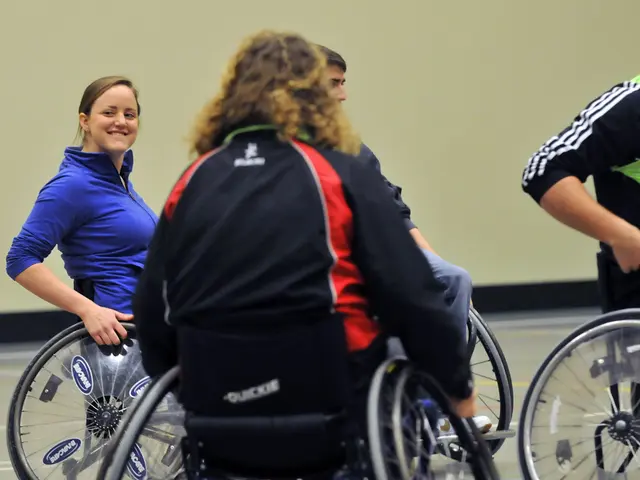Skin cancer diagnoses in Saxony have seen a significant increase since 2005. - Increase in skin cancer diagnoses observed in Saxony since 2005
Rising Skin Cancer Cases in Saxony: An Alarming Trend and Preventive Measures
Over the years, the number of skin cancer diagnoses in Saxony has been steadily increasing. As per the Barmer health insurance company, the baby boomer generations and older age groups are most affected due to UV damage sustained in their youth. According to the latest medical report, the number of melanoma cases has doubled, from 8,100 in 2005 to approximately 16,800 in 2023. Non-melanoma skin cancer diagnoses have tripled, rising from around 32,000 to nearly 98,000. Notably, women aged 50-59 are twice as likely to be diagnosed as those born between 1946 and 1955.
"Severe sunburns in younger years leave lasting damage," said Barmer regional director Monika Welfens. These are the late effects of prolonged unprotected sunbathing or solarium visits. The careless or reckless handling of UV rays, especially in the 1980s and 1990s, can still have consequences decades later. "The skin never forgets." Early detection becomes increasingly important with age to successfully treat diseases.
In Saxony, skin cancer is one of the most common types of cancer, with more men than women diagnosed, even with non-melanoma skin cancer. Welfens predicts a further increase in skin cancer diagnoses in the coming years due to behavioral patterns in younger years, increased life expectancy, and the growing number of very elderly people. While men aged 70 and above have a significantly higher risk of developing the disease, the risk decreases in those under 40, especially those born after 1980.
Barmer attributes this trend to an increased awareness among parents of the dangers of sunbathing and solarium visits. "While a tan was considered attractive in the 80s and 90s, there's now a shift in mindset," said Welfens. Parents are paying more attention to sun protection for their children and protecting them better.
Preventive measures against skin cancer include regular screenings, using sunscreen with a high sun protection factor, wearing long-sleeved clothing, hats, and avoiding direct sunlight. Additionally, artificial UV radiation, such as that from solariums, should be avoided, and the skin should be regularly checked for changes. "There's no such thing as a healthy tan."
While environmental factors like UV radiation and genetic predisposition play a role in skin cancer, lifestyle changes, such as increased outdoor activities and changes in sun protection habits, can also contribute to the rise in diagnoses. Understanding these factors and implementing effective prevention measures are crucial for reducing the incidence of skin cancer.
- Over the years, an increase in skin cancer diagnoses is evident, especially among older age groups, due to UV damage sustained in their youth.
- The skin care industry can promote vocational training in skin conditions and health-and-wellness to combat the rise in skin cancer cases, ensuring proper education on sun protection measures.
- Mental health, as a part of health-and-wellness, can be integrated into vocational training programs, focusing on the importance of stress management and self-care in preventing sun damage.
- To address the disparity in skin cancer diagnoses between men and women, it would be beneficial to offer vocational training tailored towards mens-health and womens-health, highlighting unique susceptibilities and prevention strategies.
- Fitness-and-exercise routines can also be incorporated into vocational training programs, emphasizing the role of physical activity in boosting the immune system and overall health, thereby reducing the risk of skin cancer.








